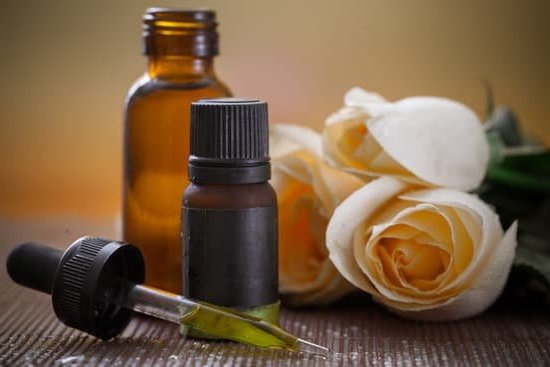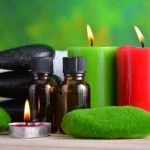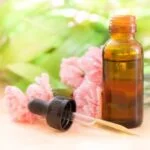Aromatherapy and stones have long been associated with spiritual practices and natural healing techniques. In recent times, there has been a growing interest in these ancient traditions, leading to questions regarding their legitimacy and classification. The topic of whether aromatherapy and stones can be considered witchcraft is a contentious one, with varying perspectives from different belief systems.
Aromatherapy involves the use of essential oils extracted from plants to promote physical and psychological well-being. It is based on the idea that certain scents can trigger specific reactions in the body, such as relaxation or heightened focus.
On the other hand, stones or crystals have been used in various cultures for centuries for their mystical properties and healing energies. These practices are deeply rooted in history and continue to be a key component of alternative medicine and spiritual rituals.
Some individuals may perceive aromatherapy and stones as forms of witchcraft due to their association with unconventional healing methods and spiritual beliefs. However, it is important to recognize that these practices are based on principles of holistic wellness and energy alignment rather than casting spells or engaging in supernatural activities. By delving into the origins, benefits, and misconceptions surrounding aromatherapy and stones, we can better understand their significance in both modern wellness practices and age-old traditions.
History of Aromatherapy
Aromatherapy has a long and rich history that dates back thousands of years. The practice involves using natural plant extracts, also known as essential oils, to promote physical, emotional, and spiritual well-being. The origins of aromatherapy can be traced back to ancient civilizations such as the Egyptians, Greeks, and Romans who utilized aromatic plants for their healing properties. These ancient cultures believed in the power of scent to influence mood and treat various ailments.
The modern concept of aromatherapy, as we know it today, began to take shape in the early 20th century when French chemist René-Maurice Gattefossé coined the term “aromatherapy” after accidentally discovering the healing properties of lavender oil. This discovery led to further research and exploration into the use of essential oils for therapeutic purposes.
Over time, aromatherapy has evolved into a popular holistic healing modality that is used in conjunction with conventional medicine to alleviate symptoms of stress, anxiety, pain, and more.
Aromatherapy is not a new-age trend or pseudoscience; it is a legitimate practice with documented benefits backed by scientific research. While some may dismiss aromatherapy as mystical or superstitious, its effectiveness cannot be denied.
The use of essential oils in aromatherapy is based on the principles of chemistry and physiology, with each oil containing specific compounds that interact with the body on a molecular level to produce therapeutic effects. Ultimately, aromatherapy is rooted in science and has proven health benefits that continue to be studied and validated by researchers around the world.
History of Stones in Witchcraft
When delving into the history of stones in witchcraft, it is important to understand the mystical and cultural significance they hold. Throughout various cultures and belief systems, stones have been revered for their spiritual properties and symbolic meanings. For centuries, different gemstones and crystals have been associated with specific energies and qualities that are believed to enhance magical practices, enhance spells, or provide protection.
To shed light on the mystical aspect of stones in witchcraft, here are some key points to consider:
- Ancient civilizations such as the Egyptians, Greeks, Romans, and Native Americans used stones for their healing properties and spiritual significance.
- In Wiccan traditions, different stones are believed to correspond with the elements (earth, air, fire, water) and chakras to balance energy flow within the body.
- Crystal grids are often created using specific stones arranged in geometric patterns to amplify intentions and harness the collective energy of the crystals.
Moreover, each stone is thought to possess unique vibrations that can resonate with individuals on a spiritual level. Some believe that carrying or wearing certain stones can promote emotional well-being, clarity of mind, or even attract abundance into one’s life. The practice of using stones in witchcraft is deeply rooted in honoring the Earth’s natural gifts and connecting with its energies to facilitate personal growth and magical work.
Ultimately, understanding the historical context behind the use of stones in witchcraft can offer insights into how these ancient traditions continue to shape modern metaphysical practices. Whether utilizing crystals for manifestation rituals or creating protective talismans with gemstones, practitioners believe in the inherent power that these natural treasures possess when it comes to aligning energy fields and enhancing spiritual connections.
Benefits of Aromatherapy
Aromatherapy is the practice of using essential oils and other aromatic plant compounds to improve physical, mental, and emotional well-being. These oils are extracted from various plants and have been used for their therapeutic properties for centuries.
Aromatherapy is not a form of witchcraft but rather a holistic healing modality that focuses on the power of scent to promote relaxation and alleviate stress. The use of essential oils can stimulate the senses and have a profound effect on mood and emotions.
One of the key benefits of aromatherapy is its ability to promote relaxation and reduce anxiety. Certain essential oils like lavender, chamomile, and rose are known for their calming properties and can help individuals unwind after a long day. These oils can be diffused in the air, added to baths, or used in massage oils to create a soothing atmosphere. Additionally, aromatherapy has been shown to improve sleep quality by creating a tranquil environment that encourages restful sleep.
In addition to promoting relaxation, aromatherapy also has healing properties that can benefit both the mind and body. Essential oils like tea tree, eucalyptus, and peppermint have antimicrobial and anti-inflammatory properties that can support the immune system and relieve respiratory issues.
By inhaling these aromatic compounds or applying them topically, individuals can experience relief from common ailments like headaches, muscle pain, and congestion. Overall, aromatherapy offers a natural approach to health and wellness that complements traditional medical treatments without conflicting with any belief systems related to witchcraft.
| Aromatherapy Benefit | Description |
|---|---|
| Promotes Relaxation | Essential oils like lavender aid in reducing anxiety and creating a calming environment. |
| Healing Properties | Tea tree oil has antimicrobial qualities while eucalyptus helps with respiratory issues. |
| Improves Sleep Quality | Chamomile oil is known for its relaxing effect which helps in enhancing sleep quality. |
Benefits of Stones in Witchcraft
Stones have long been associated with mystical and cultural significance in various traditions, including witchcraft. In the practice of witchcraft, stones are believed to hold unique energies that can be harnessed for various purposes. One of the primary benefits of using stones in witchcraft is energy alignment.
Different types of stones are thought to vibrate at specific frequencies that can help align the practitioner’s energy with their intentions or goals. By selecting the right stone based on its metaphysical properties, witches believe they can channel these energies to manifest desired outcomes.
Furthermore, stones are also utilized in witchcraft for manifestation purposes. Practitioners often use specific stones during rituals or spells to enhance their ability to attract or repel certain energies.
For instance, crystals like clear quartz are commonly used for amplifying intentions and promoting clarity, while black tourmaline is believed to absorb negative energies and protect against psychic attacks. By incorporating stones into their practices, witches aim to focus their intentions and harness the natural energies of the earth to bring about positive changes in their lives.
Despite the misconceptions and stereotypes surrounding witchcraft practices that involve the use of aromatherapy and stones, it is essential to understand that these tools serve as aids for practitioners rather than objects of worship themselves. Aromatherapy and stones are simply tools utilized by individuals who follow spiritual paths that incorporate these practices.
Whether used for healing, relaxation, energy alignment, or manifestation, both aromatherapy and stones play a significant role in enhancing spiritual connections and personal well-being within the context of witchcraft.
Misconceptions About Aromatherapy and Stones
Are Aromatherapy and Stones Considered Witchcraft?
There is a common misconception that aromatherapy and the use of stones in healing practices are forms of witchcraft. However, it is important to clarify that both aromatherapy and crystal healing have their roots in ancient traditions and holistic approaches to well-being.
Aromatherapy involves the use of essential oils derived from plants to promote physical and emotional health, while crystal healing utilizes the energy of gemstones to balance the body’s energy centers. These practices are based on principles of natural healing and mindfulness, rather than witchcraft.
Dispelling Myths About Aromatherapy
One of the most prevalent myths surrounding aromatherapy is that it is solely used for relaxation or as a form of alternative medicine without scientific basis. In reality, research has shown that certain essential oils can have therapeutic effects on various ailments such as anxiety, insomnia, and pain relief. Aromatherapy is also widely used in spa treatments for its soothing properties, but it goes beyond just relaxation-it can have profound effects on both the mind and body.
Understanding Crystal Healing
Similarly, the use of stones or crystals in healing practices is often misunderstood as a mystical or supernatural practice tied to witchcraft. While crystals do hold symbolic meanings in different cultures and belief systems, their use in healing is fundamentally based on their energetic properties.
Each stone is believed to carry specific vibrations that can help align and balance the body’s energy centers, promoting overall health and well-being. This approach is rooted in the idea that everything in the universe-including ourselves-is made up of energy that can be influenced by external forces like crystals.
How Aromatherapy and Stones Are Used in Witchcraft Practices
Aromatherapy and stones play a crucial role in various witchcraft practices, with practitioners harnessing the power of these tools for rituals and ceremonies. The use of aromatherapy involves the use of essential oils extracted from plants to enhance physical, emotional, and spiritual well-being. These oils are often incorporated into candles, incense, or diffusers during rituals to create a specific atmosphere conducive to magic and manifestation.
In witchcraft practices, certain scents are believed to have specific properties that align with the intentions of a ritual. For example, lavender may be used for relaxation and peace, while rosemary is associated with protection and purification. By using aromatherapy in conjunction with intention setting during rituals, practitioners aim to amplify the energy they are working with. Additionally, the act of inhaling these scents can help focus the mind and deepen one’s connection to the spiritual realm.
Similarly, stones are commonly used in witchcraft practices due to their energetic properties and associations with different elements and deities. Crystals such as amethyst for spiritual growth or black tourmaline for protection are often chosen based on their correspondences to particular intentions or energies.
During ceremonies, stones may be placed on altars or used as tools for casting circles or creating crystal grids to amplify magical work. The belief is that each stone carries a unique vibration that can aid in shifting energy and manifesting desires.
The Science Behind Aromatherapy and Stones
Aromatherapy and the use of stones in various practices have been around for centuries, with roots in different cultures and belief systems. While some may perceive these practices as forms of witchcraft, they actually have scientific explanations behind their psychological and physiological effects.
Aromatherapy, which involves using essential oils extracted from plants for therapeutic purposes, works by stimulating smell receptors in the nose that then send messages to the limbic system – the part of the brain that controls emotions. This leads to the release of chemicals like serotonin, which can positively impact mood and reduce stress levels. Furthermore, certain scents like lavender have been shown to improve sleep quality and relaxation.
Similarly, using stones in rituals or ceremonies is believed to harness the energy within them to align with specific intentions or goals. From a scientific standpoint, crystals and gemstones are thought to interact with your body’s energy field or chakras, promoting balance and overall well-being. For example, amethyst is often used for its calming properties while citrine is associated with abundance and prosperity.
| Aromatherapy | Stones in Witchcraft |
|---|---|
| Stimulates smell receptors in the nose | Harnesses energy within stones |
| Release of chemicals like serotonin | Interacts with body’s energy field or chakras |
| Improves mood and reduces stress levels | Promotes balance and overall well-being |
Conclusion
In conclusion, the practice of aromatherapy and the use of stones in witchcraft are deeply rooted in history and culture, offering individuals a range of benefits for their overall well-being. While some may question whether aromatherapy and stones are forms of witchcraft, it is important to recognize that these practices have been utilized for centuries as tools for healing, relaxation, and spiritual alignment.
Aromatherapy harnesses the power of essential oils to promote physical and emotional healing, reduce stress, and enhance relaxation. Similarly, stones in witchcraft have been used for their energy-alignment properties and ability to aid in manifestation through rituals and ceremonies. Both practices involve a deep connection with nature and an understanding of how different elements can influence our mind, body, and spirit.
Despite misconceptions surrounding aromatherapy and stones being labeled as witchcraft, it is crucial to approach these practices with an open mind and respect for their cultural significance. By understanding the science behind aromatherapy and the use of stones in rituals, individuals can appreciate the therapeutic benefits they offer. Ultimately, whether used for holistic healing or spiritual purposes, aromatherapy and stones play a valuable role in enhancing our overall well-being.
Frequently Asked Questions
What Belief Is Aromatherapy Based On?
Aromatherapy is based on the belief that inhaling the aroma of essential oils can positively affect emotional and physical well-being. It is believed that these natural plant extracts have healing properties that can promote relaxation, reduce stress, and improve overall health.
What Is the Spiritual Meaning of Aromatherapy?
The spiritual meaning of aromatherapy varies depending on individual beliefs and practices. Some view it as a way to enhance meditation, prayer, or other spiritual practices by creating a calming atmosphere or invoking positive energy through scents. Others see it as a tool for connecting with nature and promoting inner peace.
What Does the Bible Say About Essential Oils?
There are references to the use of essential oils in the Bible, particularly in relation to anointing rituals and healing practices. In the Old Testament, various aromatic substances like frankincense, myrrh, and cedarwood are mentioned as being used for sacred ceremonies and purification purposes.
Although not explicitly endorsing aromatherapy as we know it today, these biblical references suggest a recognition of the healing properties of certain natural oils.

Are you looking for a natural way to improve your health and wellbeing?
If so, aromatherapy may be the answer for you.






